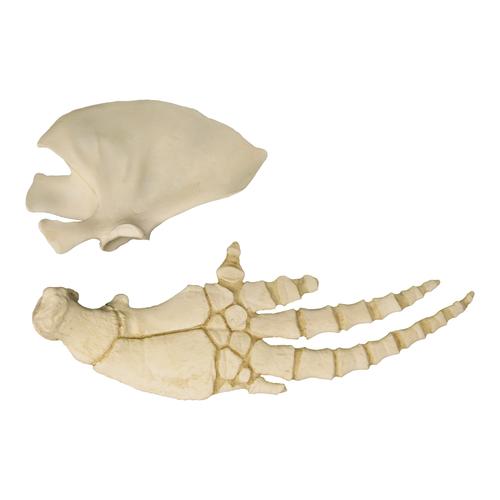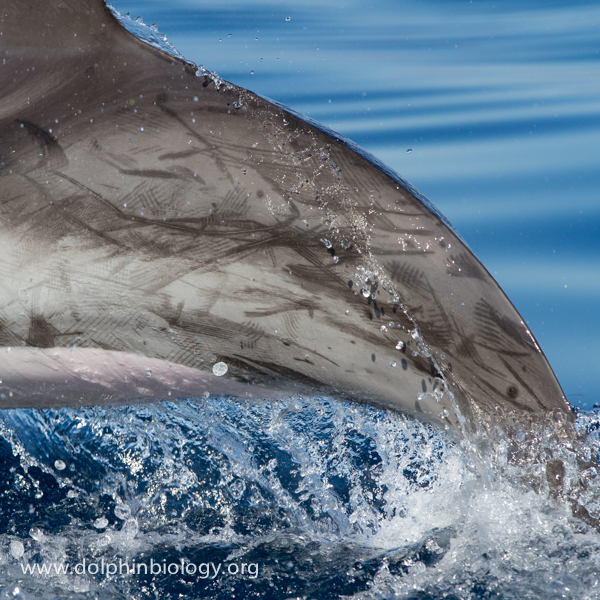I recently had the wonderful experience of spending some time with the most amazing aquatic mammals – dolphins! Here are some fun facts about dolphins that you may not know…

Even though we have named one of the most common types of dolphins “bottlenose”, the front portion of the dolphin’s head is not a nose, it’s called the rostrum. Dolphins breath and make sound through their blow hole. They squeeze the muscles surrounding the blow hole to make different types of squeaks and clicks or to close it completely when going underwater.
Each dolphin has a unique dorsal fin (the single fin on top used primarily for balance and stability), and a marine biologist can use this to tell dolphins apart. A dorsal fin has no bones and is flopped over when the dolphin calf is born. A dolphin’s pectoral fins (the two side fins) do have bones. There is a ball and socket joint between the dolphin’s fin and torso area (similar to a human shoulder) and five finger-like bones spread out to the edges of the fin. The main purpose of these fins is steering.

When dolphins play (and they love to play a lot!), they scratch each other with their teeth. This makes marks on their skin called rake marks. A dolphin usually has many rake marks and a scientist observing the dolphin might be concerned if they didn’t, because it would mean the dolphin wasn’t playing with the other dolphins. But scientists don’t use rake marks to identify dolphins, because they are constantly changing. Dolphins shed their outer layer of skin about 12 or more times a day!

Want to learn more about dolphins? Check out these links…
https://kids.nationalgeographic.com/animals/mammals/bottlenose-dolphin/

